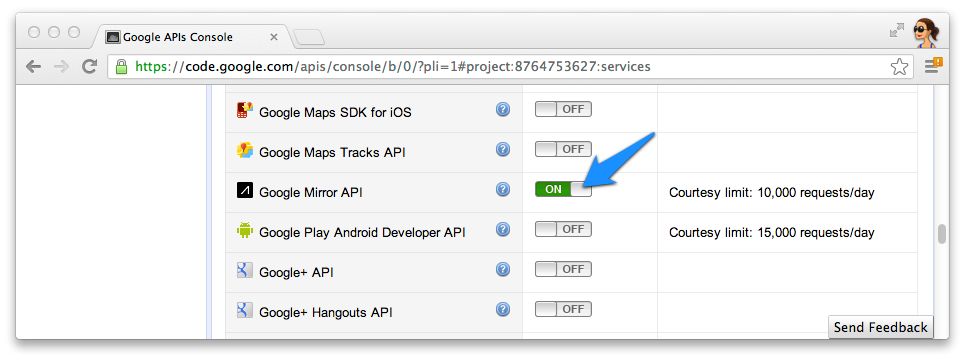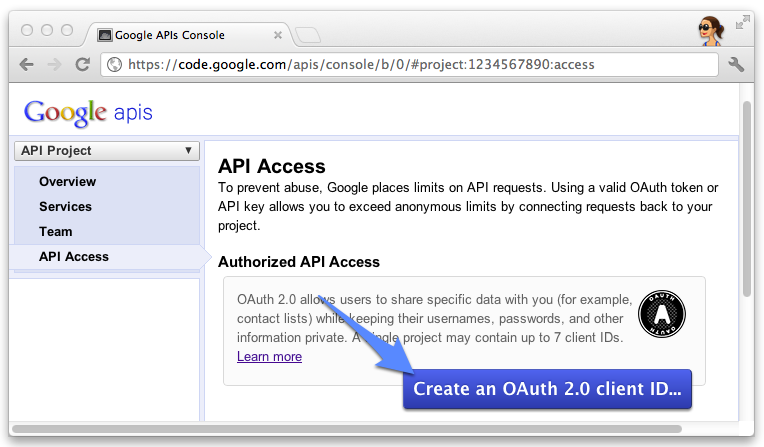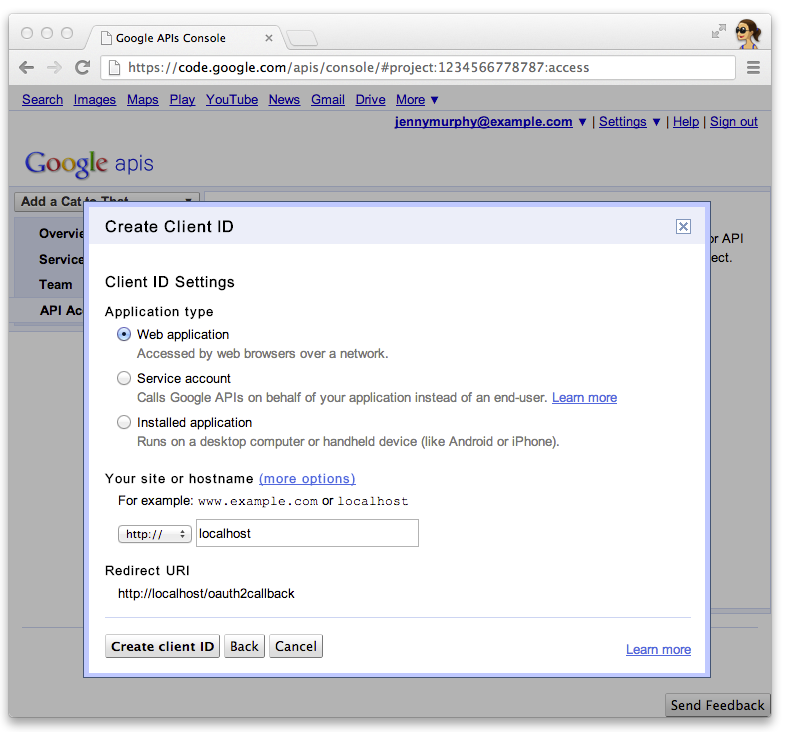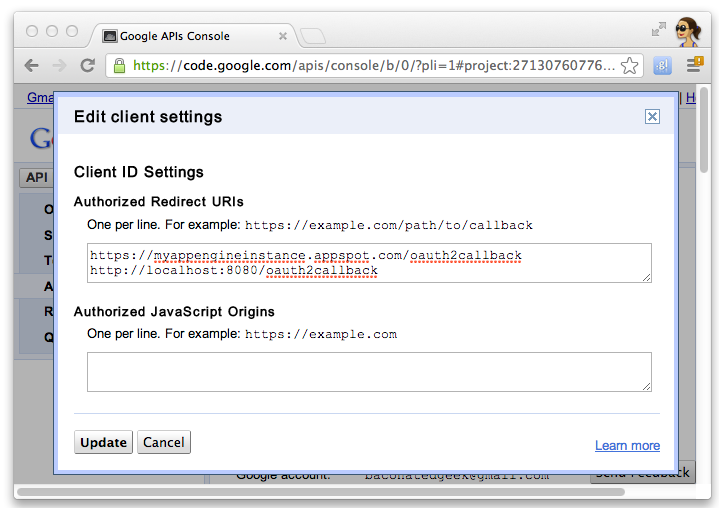يوضح لك هذا المشروع كيفية تنفيذ طريقة Glassware الذي يعرض الوظيفة الرئيسية لواجهة برمجة تطبيقات Google Mirror.
للاطّلاع على عرض توضيحي يعمل بشكل كامل لمشروع البدء السريع، انتقِل إلى https://glass-python-starter-demo.appspot.com. أو يمكنك متابعة القراءة لمعرفة كيفية نشر الإصدار الخاص بك.
المتطلبات الأساسية
حزمة تطوير البرامج (SDK) لـ App Engine الخاصة بـ Python - يتم تنفيذ مشروع البدء السريع في بايثون باستخدام محرك التطبيقات. أنت بحاجة إلى SDK لـ Python App Engine لتطوير مشروعك ونشره. شغِّل أداة التثبيت إذا كان ذلك مناسبًا لنظامك الأساسي، أو استخرِج ملف ZIP في مكان مناسب.
إنشاء مثيل Google App Engine
ستحتاج إلى استضافة مشروع البدء السريع على مثيل من Google App Engine:
- انتقِل إلى http://appspot.com.
- انقر على إنشاء تطبيق وأنشئ نسخة افتراضية من Google App Engine تتم استضافتها على
appspot.com. - امنح التطبيق معرِّف التطبيق واترك المصادقة مفتوحة لجميع Google مستخدمو الحسابات: ستحتاج إلى معرّف التطبيق لاحقًا لضبط مشروع البدء السريع.
إنشاء مشروع على Google APIs Console
بعد ذلك، فعِّل الوصول إلى Google Mirror API:
- انتقِل إلى وحدة تحكُّم Google APIs وأنشئ مشروع واجهة برمجة تطبيقات جديدًا.
- انقر على الخدمات وفعِّل Google Mirror API لمشروعك الجديد.

- انقر على الوصول إلى واجهة برمجة التطبيقات وأنشِئ معرِّف عميل OAuth 2.0 لتطبيق ويب.

- حدد اسم المنتج ورمزه لـ Glassware. تظهر هذه الحقول في طلب منح بروتوكول OAuth.
الشاشة المقدمة للمستخدمين.

- اختَر تطبيق الويب وحدِّد أي قيمة لاسم المضيف، مثل
localhost.
- انقر على تعديل الإعدادات... لمعرِّف العميل لتحديد معرِّفات الموارد المنتظمة (URI) لإعادة التوجيه. يُرجى التحديد
http://localhost:8080/oauth2callbackوعنوان URL لرد الاتصال لـ App Engine على سبيل المثال،https://myappengineinstance.appspot.com/oauth2callback.
- دوِّن معرِّف العميل وسره من وحدة تحكُّم Google APIs. ستحتاج إلى
لتهيئة مشروع البدء السريع.

ضبط المشروع
اضبط مشروع "البدء السريع" لاستخدام معلومات عميل واجهة برمجة التطبيقات:
- يُرجى إدخال معرّف العميل وسر العميل في
client_secrets.json:{ "web": { "client_id": "1234.apps.googleusercontent.com", "client_secret": "ITS_A_SECRET_TO_EVERYBODY", "redirect_uris": [ ], "auth_uri": "https://accounts.google.com/o/oauth2/auth", "token_uri": "https://accounts.google.com/o/oauth2/token" } }
- إنشاء ملف
session.secretلتخزين ملفات تعريف الارتباط الخاصة بالجلسة:$ python -c "import os; print os.urandom(64)" > session.secret
- تعديل
app.yamlلإدخال معرّف تطبيق App Engine:application: your_app_engine_application_id version: 1 runtime: python27 api_version: 1 threadsafe: true ...
نشر المشروع
اضغط على الزر الأزرق نشر في واجهة واجهة المستخدم الرسومية (GUI) لتشغيل App Engine أو شغّل هذا القسم الأمر لنشر التعليمة البرمجية:
$ appcfg.py --oauth2 update .

